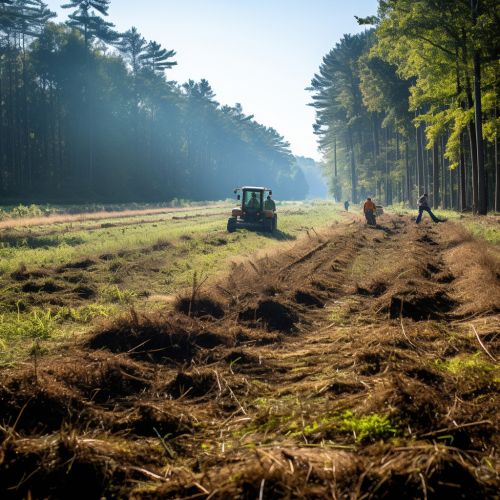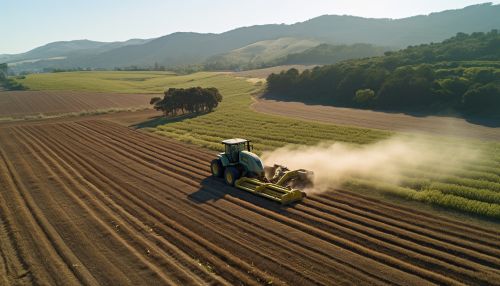Sustainable land management
Introduction
Sustainable land management (SLM) is a comprehensive approach to managing land resources that aims to integrate ecological, economic, and social considerations to meet the needs of the present without compromising the ability of future generations to meet their own needs. It involves a wide range of practices and technologies, including integrated pest management, agroforestry, contour plowing, and terracing, among others. SLM is a critical component of sustainable development and plays a key role in addressing a range of environmental challenges, including soil degradation, water scarcity, and biodiversity loss. Read more about sustainable development.
History and Development
The concept of SLM emerged in the late 20th century in response to growing concerns about land degradation and its impact on agricultural productivity and food security. The United Nations Conference on Environment and Development (UNCED), held in Rio de Janeiro in 1992, highlighted the importance of SLM in achieving sustainable development and led to the establishment of the United Nations Convention to Combat Desertification (UNCCD), which promotes SLM as a key strategy for combating desertification and mitigating the effects of drought. Learn more about UNCCD.


Principles of Sustainable Land Management
SLM is guided by several key principles, including:
- Integrated Approach: SLM recognizes the interconnections among various land uses and promotes integrated approaches that consider the ecological, economic, and social dimensions of land management.
- Participatory Process: SLM involves the active participation of all stakeholders, including local communities, in decision-making processes related to land management.
- Adaptive Management: SLM promotes adaptive management strategies that are flexible and responsive to changing environmental conditions and societal needs.
- Precautionary Principle: SLM advocates for the precautionary principle, which emphasizes the need to take preventive action in the face of uncertainty to avoid or minimize potential harm to the environment.
- Long-term Perspective: SLM takes a long-term perspective, recognizing that sustainable outcomes often require long-term commitments and investments.
Practices and Technologies
There are numerous practices and technologies associated with SLM, including:
- Integrated Pest Management (IPM): IPM is a pest control strategy that uses a combination of techniques, including biological control, habitat manipulation, modification of cultural practices, and use of resistant varieties, to manage pest populations in a way that minimizes harm to people and the environment. Learn more about IPM.
- Agroforestry: Agroforestry involves the integration of trees into agricultural systems to create more diverse, productive, profitable, healthy, and sustainable land-use systems. Read more about agroforestry.
- Contour Plowing: Contour plowing is a farming practice where furrows are made along the contours of the land to slow water runoff and prevent soil erosion. Learn more about contour plowing.
- Terracing: Terracing involves the creation of flat areas on mountain slopes to make cultivation possible and prevent soil erosion. Learn more about terracing.


Benefits of Sustainable Land Management
SLM offers a range of environmental, economic, and social benefits, including:
- Environmental Benefits: SLM helps to conserve soil, water, and biological resources, enhance ecosystem services, and mitigate climate change by sequestering carbon in the soil.
- Economic Benefits: SLM can increase agricultural productivity and profitability, enhance food security, and contribute to rural development.
- Social Benefits: SLM can improve livelihoods, reduce poverty, and promote social equity by ensuring access to and control over land and other natural resources.
Challenges and Future Directions
Despite its potential benefits, the implementation of SLM faces several challenges, including lack of awareness and understanding, inadequate policy and institutional support, and limited access to financial resources and technical knowledge. Addressing these challenges requires concerted efforts at various levels, from local to global, and involves a range of strategies, such as capacity building, policy reform, research and development, and public-private partnerships.
Looking ahead, the role of SLM in achieving the Sustainable Development Goals (SDGs), particularly those related to zero hunger, clean water and sanitation, life on land, and climate action, is increasingly recognized. As such, there is a growing emphasis on mainstreaming SLM into national and international policy frameworks and development strategies. Learn more about SDGs.


